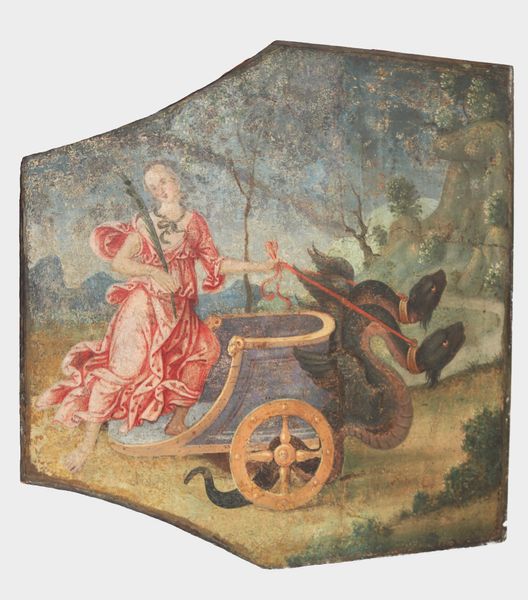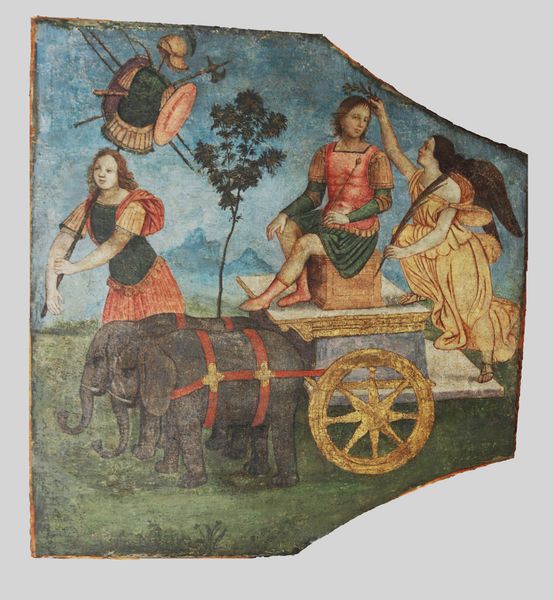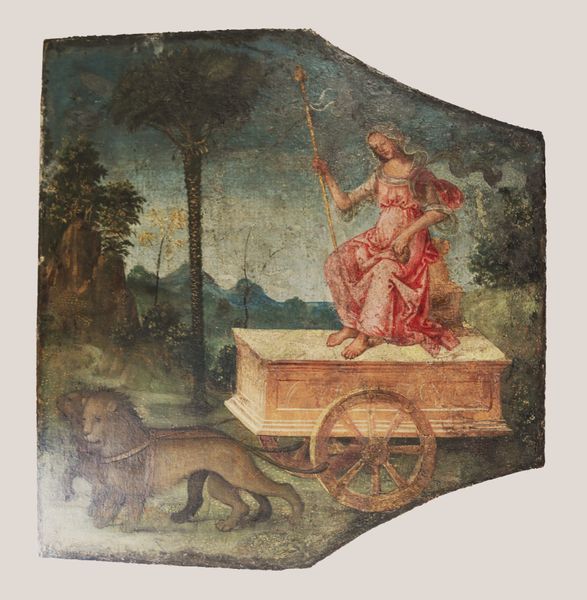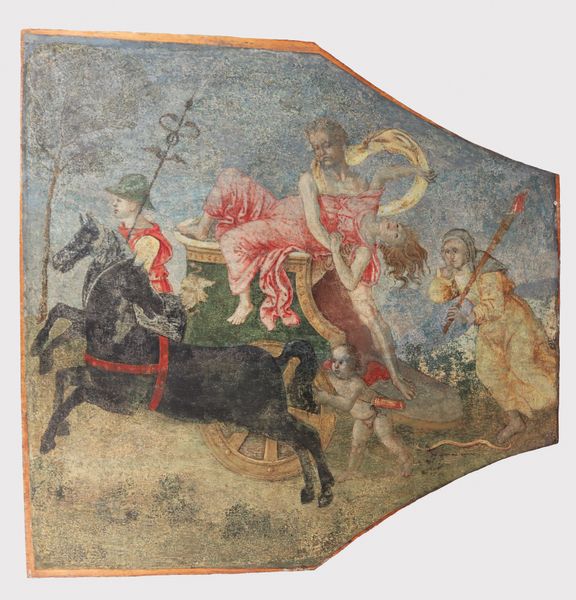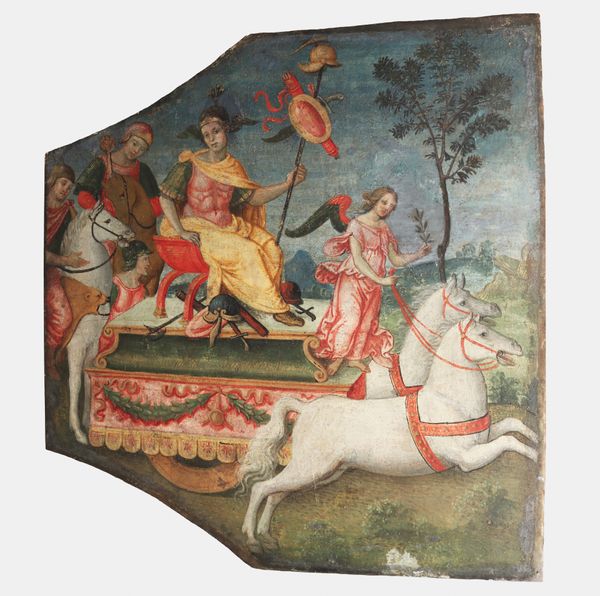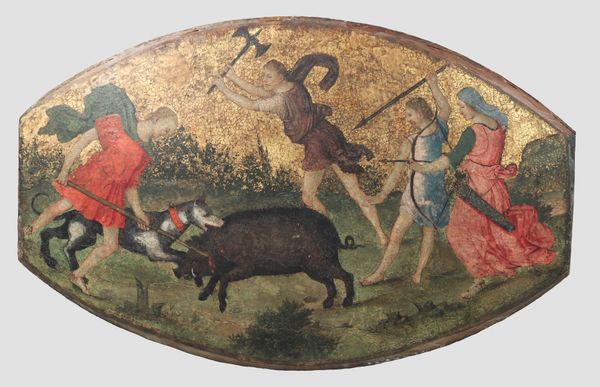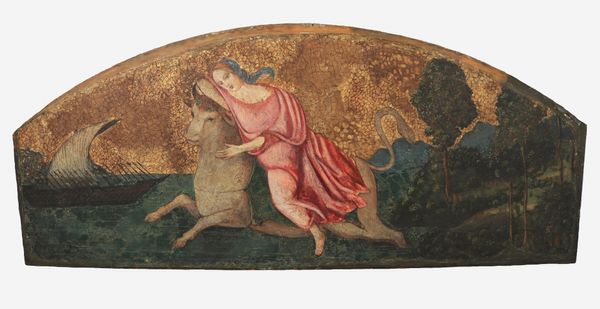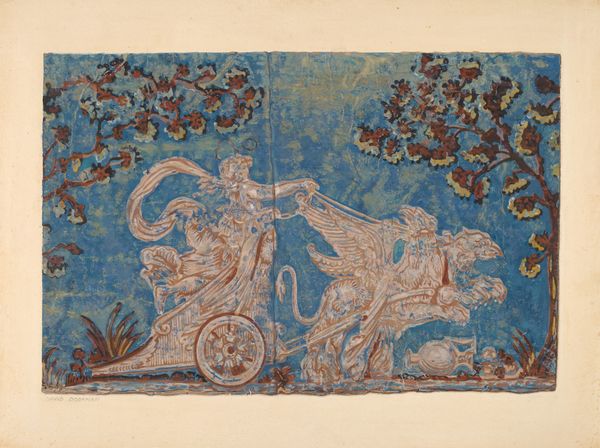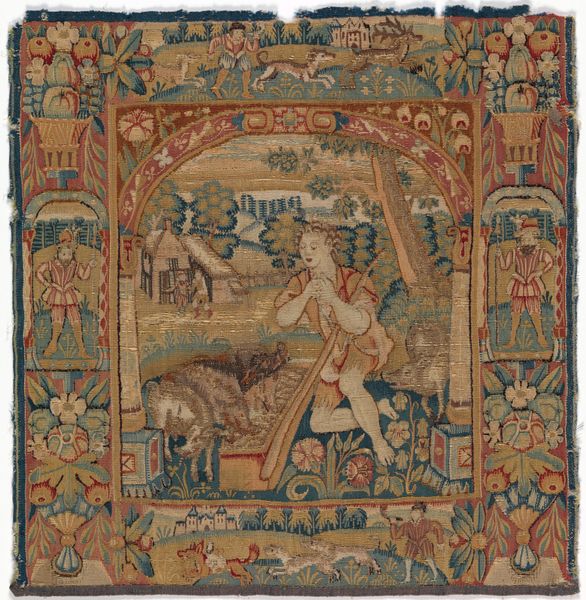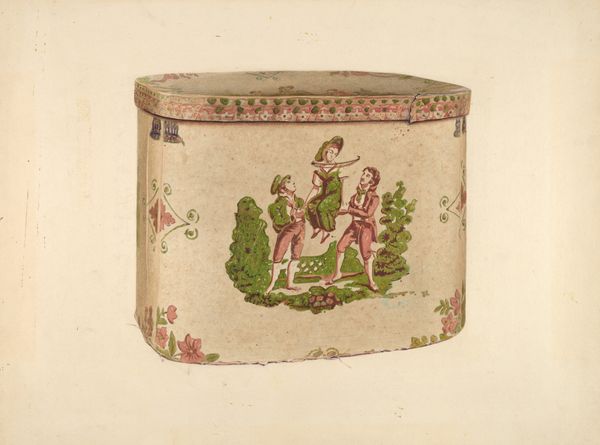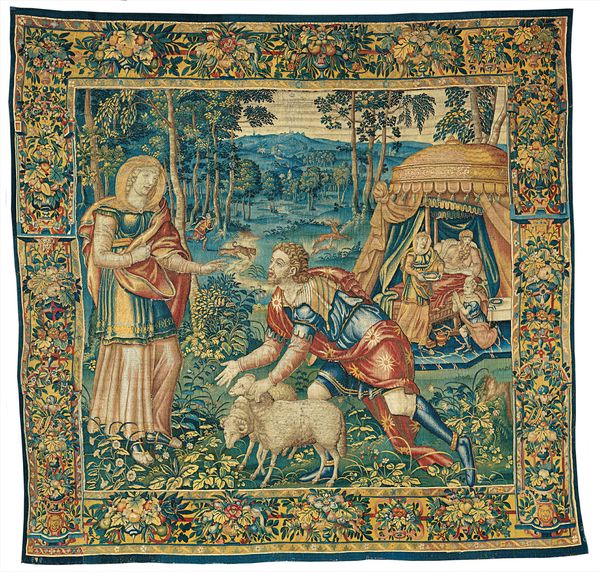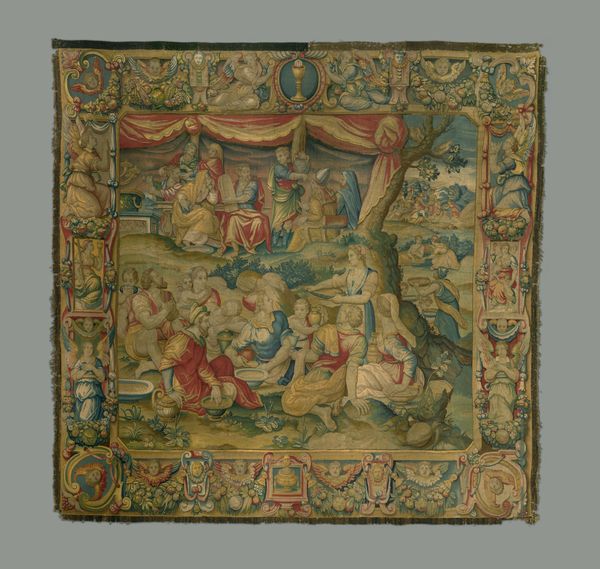
tempera, painting
#
allegory
#
tempera
#
painting
#
oil painting
#
history-painting
#
decorative-art
#
italian-renaissance
Dimensions: Overall: 31 × 31 7/8 in. (78.7 × 81 cm)
Copyright: Public Domain
Pinturicchio painted this panel of the Triumph of Mars with tempera on wood, sometime around the turn of the sixteenth century. The smooth surface is characteristic of the medium, where powdered pigments are bound with egg yolk. The artist would have carefully layered the paint, building up the design from background to foreground. The tempera technique would have allowed Pinturicchio to achieve a high level of detail, evident in the delicate rendering of the figures’ drapery and facial features, but also in the surface of the panel itself. The choice of tempera was deliberate, echoing earlier Italian painting traditions, and would have required a great deal of careful preparation. Its jewel-like, matte surface stands in contrast to the oil-based techniques favored in the Renaissance, yet it is a good example of how the materials and techniques employed by artists are imbued with cultural significance, regardless of perceived hierarchies. The real triumph is not in the figure of Mars, but the artist's demonstration of skill.
Comments
No comments
Be the first to comment and join the conversation on the ultimate creative platform.
